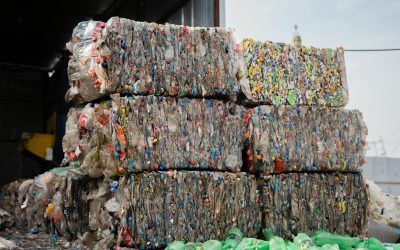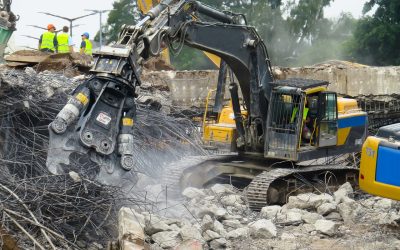Trommel screens have an easy-to-use design, and they can handle a wide range of materials. But these machines are susceptible to damage caused by binding and plugging, and they aren’t as efficient as vibrating or disc screens.
In this post, we’ll cover common disadvantages of trommel screens and explain how the Freedom Disc Screen offers a more robust solution.
Clogging and Wrapping
Industrial screening equipment is deployed in many industries to screen and size a variety of materials. In many cases, certain materials prove particularly challenging for screening. Often, materials like biomass, municipal solid waste, and plastics place extra demand on traditional equipment, like trommels and star screens.
After just a few hours of operation, a trommel screen drum or conventional star screen shaft becomes wrapped and clogged with stringy and damp material. Without frequent cleaning, these machines produce inefficient screening and require frequent maintenance stoppages.
Meanwhile, the Freedom Disc Screen’s anti-clogging system keeps the deck free and clear, providing efficient screening of the most difficult materials. This is because of its unique faceted disk shape. The faceted disks help to agitate the material, freeing entrapped fines while simultaneously protecting the shafts. The reliability of the Freedom Disc Screen and lack of time required for cleaning means more operation time and production volume through your system.
Size of Separation
With a trommel, the size of separation is fixed with the screen media on the deck. Changing the screen sizing requires several hours of downtime for a complete change of the screen mesh in the machine.
The Freedom Disc Screen allows for instant changing of screen size by adjusting the speed of operation. By increasing or decreasing the speed of the machine, the separation size can be changed plus or minus 20%.
Running the machine faster produces a finer product while running slower will produce a coarser product. This simple ability allows the operator to quickly adjust to changing material conditions without costly downtime and the need for tools or parts expenditures.
Accurate Sizing in 3 Dimensions
An additional problem of screen size is the passage of elongated material and spearing. With the action of a trommel screen constantly lifting and dropping material, it lifts long pieces and then drops them vertically through the smaller screen openings.
Because the shafts of the Freedom Disc Screen are driven, spearing is greatly reduced. Elongated pieces or pokers are laid down on the screen deck and propelled horizontally across the screen, reducing the opportunity for them to orient themselves and contaminate your product.
Related Article: Learn more about the disadvantages of trommel screens.
Screening Capacity and Footprint
Screening in a trommel is only accomplished on the bottom of a drum. With any given trommel diameter and length, the screen area of the machine is defined by 1/3 of the drum diameter by the screen length. And the Freedom Disc Screen’s large effective area of the screen provides substantial capacity advantages in a given footprint.
Large trommels require large motors and associated energy consumption to move their mass. A typical 40’ trommel machine requires 40 HP and 30 kilowatts per hour to run the machine. For the same capacity, an energy-efficient Freedom Disc Screen only requires a 10 HP motor and corresponding 7.5 kilowatts per hour.
Compact Size and Screening Flexibility
Compared to the dimension of a trommel sized for a given application, the Freedom Disc Screen provides significant space savings and a compact footprint. Our disc screens can be arranged with multiple cut sizes in a single deck, or units with different separation sizes can be stacked on top of each other. A cascade arrangement with several screens can also be configured in a small footprint.
The ability to arrange your shredder and screen in a compact footprint provides significant cost savings during construction in reduced structure, conveyor, and building requirements.
If you’re ready to save money, energy, and time, learn more about AEI’s solution.


